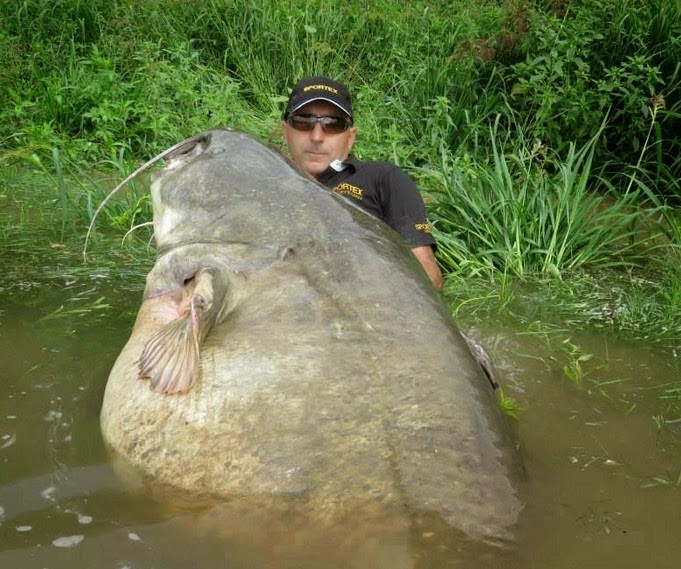First published in International Aquafeed, January - February 2015
Fish, mussels and algae were not only the
subject of discussion – they could be seen and almost touched at the
Marketplace for Aquaculture in Hall 17 at the Hanover Fairgrounds, Germany.
 In Hall 17 everything revolved around life
and growth in water. A DLG showcase “Growth in Water” was set up for the first
time. As a blue planet, the earth is largely covered with water and this should
be reason enough to demonstrate the potential of the organisms that grow in
water.
In Hall 17 everything revolved around life
and growth in water. A DLG showcase “Growth in Water” was set up for the first
time. As a blue planet, the earth is largely covered with water and this should
be reason enough to demonstrate the potential of the organisms that grow in
water.
The Marketplace for Aquaculture remained
true to its concept again this year too, showing innovations presented by
exhibitors, but also providing professional information in the Forum
Aquaculture and impartial advice at the Aquaculture Advisory Centre. Leading
outfitters for fish keeping and feed suppliers were represented, as well as
specialists in wastewater treatment and net production.
At the twelve sessions fifty national and
international speakers had their say and joined in discussions with the
audience. The first day was devoted to Aquaculture & Cost Efficiency,
Rearing and Innovations. The sessions on Aquaculture & Growth in Water,
Feed, and New Ways for Practice followed on Wednesday, 12 November. Aquaculture
& Law, Sturgeon – Fish of the Year 2014, and Market and International
Developments were the subject of discussions on Thursday, 13 November.
A meeting between international fish
breeders and fish traders was organised for the first time in 2012 and at the
special request of the participants this was repeated in 2014 (2nd
International Fish Discussion). They had lots to say to each other and the
international ‘Fishtalk’ lived up to its name, helping many producers to find
new customers.
Read the magazine HERE.
From 11 to 14 November 2014, altogether
2500 exhibitors gathered at the leading international trade fair for animal
husbandry and management covering an exhibition floor space of 240 000 m² to
present new and established exhibits to 156 000 visitors.
 In Hall 17 everything revolved around life
and growth in water. A DLG showcase “Growth in Water” was set up for the first
time. As a blue planet, the earth is largely covered with water and this should
be reason enough to demonstrate the potential of the organisms that grow in
water.
In Hall 17 everything revolved around life
and growth in water. A DLG showcase “Growth in Water” was set up for the first
time. As a blue planet, the earth is largely covered with water and this should
be reason enough to demonstrate the potential of the organisms that grow in
water.
Mussels, shrimps and crustaceans were on
show, as were African catfish (Clarias
ssp), cichlids (Tilapia) and all kinds of freshwater fish. The sturgeon which
was ‘Fish of the year 2014’ in Germany naturally also played a role. Nine
companies joined DLG (Deutsche Landwirtschafts-Gesellschaft – German
Agricultural Society) in arranging the showcase and attracted large numbers of
visitors.
The fish were constantly surrounded, as was
the green shimmering photo-bioreactor for producing microalgae. Biomass in
combination with water cleaning, known as aquaponics, also drew crowds, and the
plant-based purifying systems for water cleaning were also new topics in the
Marketplace and at EuroTier.
Above all national and international fish
farm providers for closed freshwater and saltwater systems came to Hanover –
from Germany, Denmark, Austria, the Netherlands, the Czech Republic, and this
year also from the People’s Republic of China, the pioneers in aquaculture.
Altogether the marketplace in Hall 17 played host to 40 aquaculture exhibitors.
There was a full house at Forum Aquaculture
2014 when it was opened by Dr Birgit Schmidt-Puckhaber, DLG Project Manager for
Aquaculture and the Lower Saxony Fisheries Director, Dr Olaf Prawitt, who
welcomed the audience. The interest in topical, practice-driven and
controversial facts and trends in fish keeping and water treatment was very
high. New aquaculture candidates and production sequences were introduced and reports
on practical experience gained with new farming systems were presented.
On Friday, 14 November, the Forum addressed Technology & Systems and
Aquaculture & Products, as well as the changeover of organic operations.
The summaries of the entire Forum are being combined in written form and can be
ordered as a pdf file by email.
No Forum without a stand party remained the
maxim this year too. Both exhibitors and visitors celebrated in high spirits,
enjoying delicious fish dishes, beer and wine following a long exhibition day.
The Fish Party was opened by Dr Bernhardt Feneis - the President of the
Association of German Inland Fisheries and Aquaculture (VdBA). He is also Vice
President of FEAP, the Federation of European Aquaculture Producers.
For instance there were lively discussions
between Turkish and Danish trout producers about prices and import duties.
Traders debated the sense and nonsense of certificates, from Biolabel to Global
Gap. Eric Bink, Chairman of the new Dutch Aquaculture Experts association,
opened the International Fish Discussion.
The established maxim of the Fish Talk was
a brief opening address, lots of discussions, getting to know each other
quickly and building up fruitful contacts in a relaxed setting with food and drink
– a kind of 'fisheries speed dating'.
Aquaculture at EuroTier is a get-together
for the industry that is increasingly attracting international interest.
Although the aquaculture sector will not fill halls at the leading trade fair
for animal husbandry and management, ‘Growth in Water’ makes EuroTier a whole
lot more colourful and interesting.
The Aquaculturists
This blog is maintained by The Aquaculturists staff and is supported by the
magazine International Aquafeed which is published by Perendale Publishers Ltd
For additional daily news from aquaculture around the world: aquaculture-news








.jpg)









